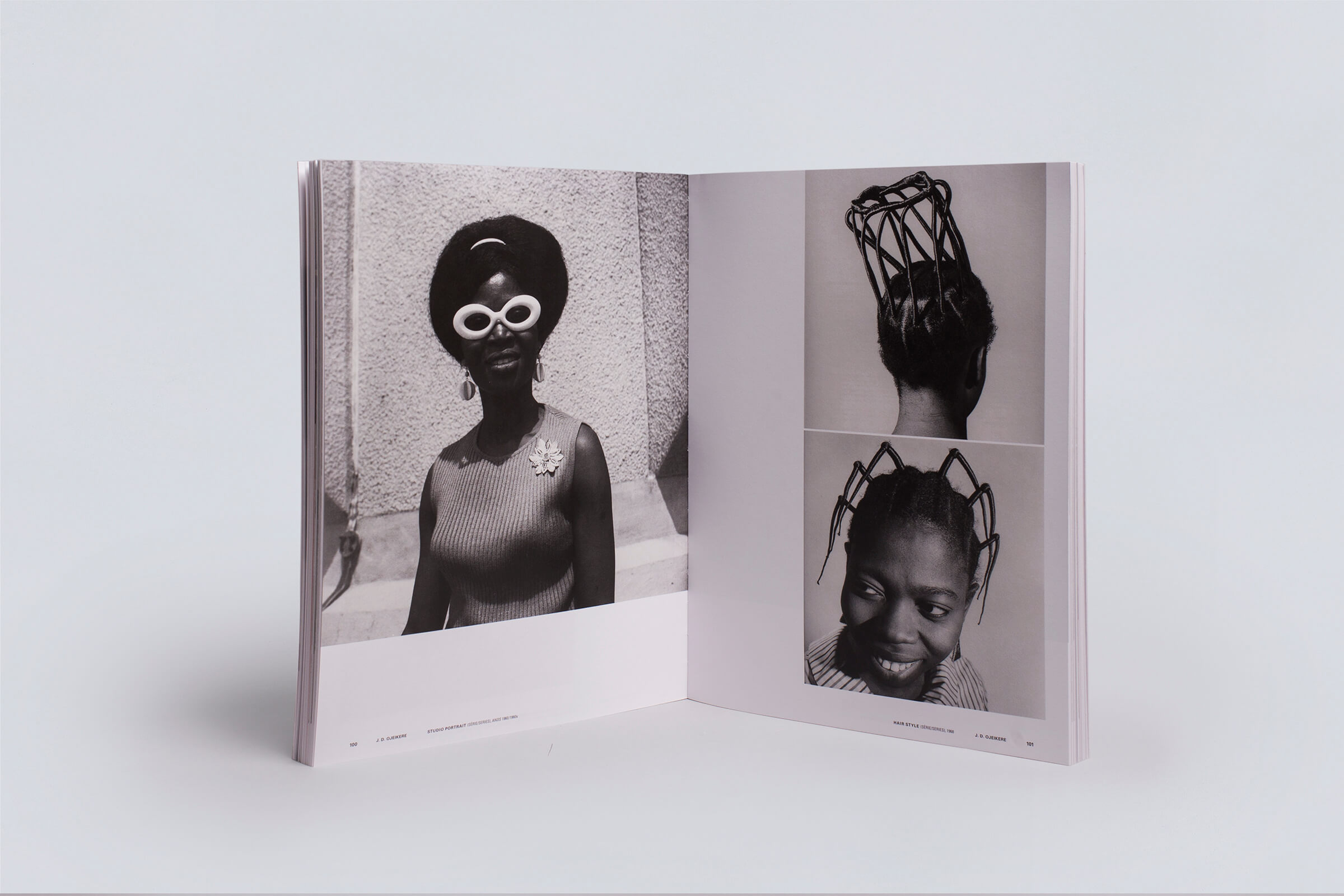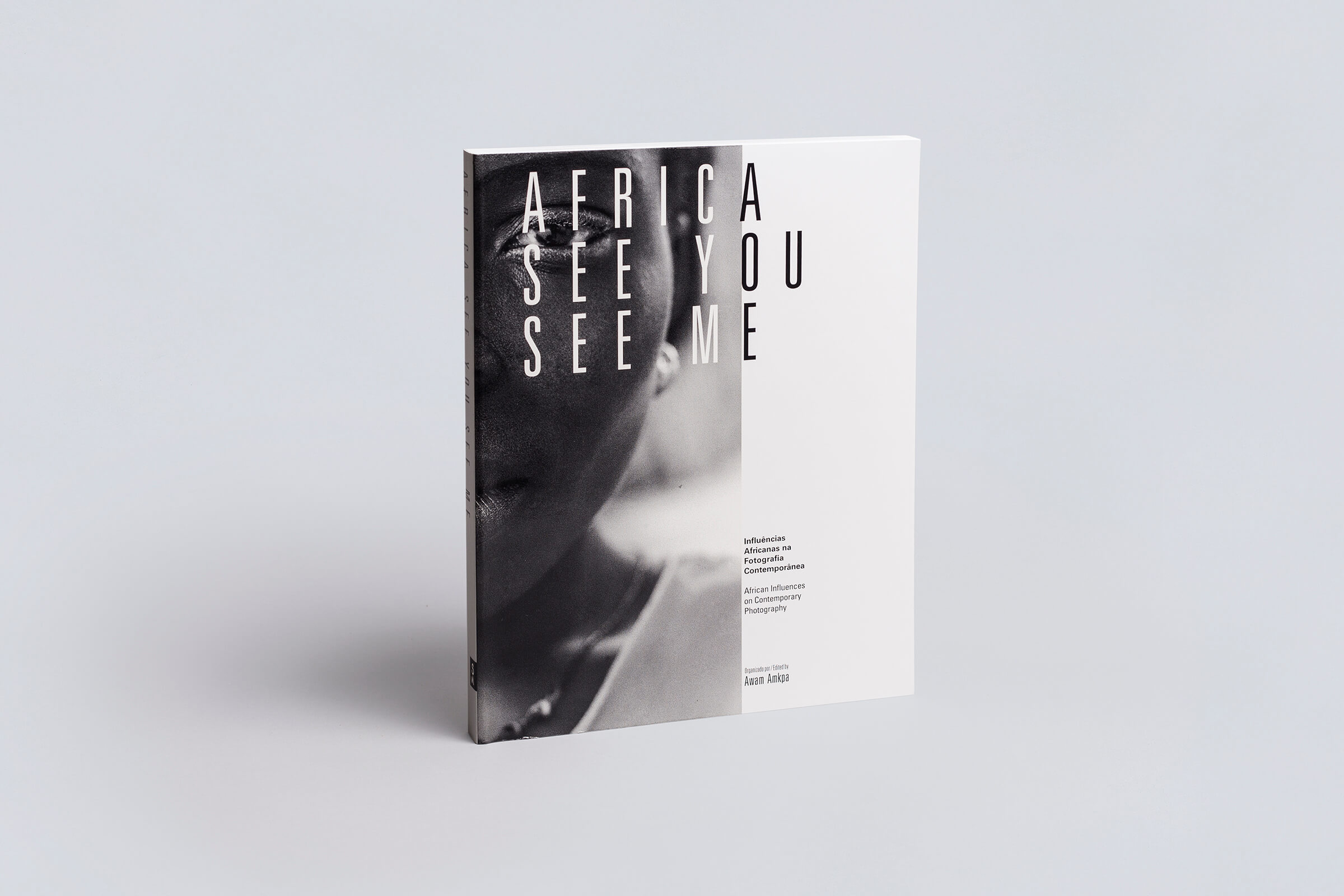This publication is a follow-up to the exhibition Africa: See You, See Me! curated by Awam Amkpa, which was held at the Pavilhão Preto of the City Museum from October 1 to December 19, 2010, as part of the AFRICA.CONT programme. In addition to photographic documentation of the works presented, it also contains texts by António Costa, José António Fernando Dias, Awam Amkpa, Manthia Diawara, Alessandra Di Maio, Ulrich Baer, an interview with Seydou Keïta by Lydie Diakhaté and the transcript of a debate in the context of the exhibition on the theme: “The Influence of the Self-Representation of Africans and the Diaspora in the Contemporary Forms of Photographing Africa”, with the participation of José António Fernando Dias, Awam Amkpa, Emília Tavares, Jahman Anikulapo, Nuno Porto, George Osodi, Okwui Enwezor and Marco Ambrosi.
“In no other field is the conflict of power between subject and object, photographer and photographed, more obvious. Both of these persistent images of Africa agree on the geographic and cultural space that they occupy in the map of modern colonialism: without history, the Other, as the opposite of the image that we built for ourselves, Europe, is created in the same movement. What Awam Amkpa does in this clever and beautiful exhibition is to offer us a new environment of the imagination that inspires a more rational discourse about Africa, which contradicts the usual illusions. This is needed for ethical and epistemological reasons.”
-José António Fernandes Dias
“Africa: See You, See Me! portrays the history of African photography and its influence on non-African imaginings of Africa and the African diaspora in all their diversity. Other prominent African curators such as Okwui Enwezor and Simon Njami have advanced our understanding of the origins, trajectories, complexities, and reception of image-making in Africa. This exhibition extends and continues their curatorial narratives by drawing attention to contemporary Africa re-framings of Africans in artistic and documentary photographs. Together, the photographs are texts of African subjectivities, archives of history and societies in the making, and methods for understanding how images contribute to emancipation.”
-Awam Amkpa
“Both photography and film were introduced in Africa by European explorers, colonial administrators, anthropologists and missionaries in search of the primitive and the exotic. It is therefore revealing that the early photographs and films of Africans by Europeans were concerned with documenting nudity, tribal marks, religious customs, and polygamous African chiefs. The Africans in these documentaries lack subjectivity and personal style; they are reified and framed by an outsider’s gaze. In a sense, primitive photography and film were interested in asserting and maintaining the superiority of the European over the African.”
-Manthia Diawara
“Lydie Diakhaté: When young people come to see you, wanting to become photographers, what device do you give them?
Seydou Keïta: ‘It’s very good.’ I encourage them. ‘The photo is good. But the camera you’re working with now, I don’t know it.’ I’ve always been familiar with the darkroom. But now, all that is over with. In the old days, during the colonial period, we worked in black-and-white. You had all the materials available. Today, when you want to make a print, it’s a big problem. You search all around in the marketplace, but you won’t find black-and-white supplies in 18 by 24 format. Now, all these young people have become photographers, and everyone works in color. There aren’t a lot who do their own laboratory work.”
-Lydie Diakhaté and Seydou Keïta
“It is impressive to note the extent to which Italy is present in this show. Even more remarkable is the fact that photographers from Italy and Portugal have been chosen to represent the African Diaspora in Europe. Amkpa, together with his artists, remind us that the Diaspora crosses multiple spaces, not only the territories of the former hegemonic imperial powers. Africa, including its Diaspora, like Europe, is a complex reality, invoking a plurality of visions. Only if Europe finally sees Africa for what it is, Africa will see Europe for what it has become.”
-Alessandra Di Maio
“We need shows like Africa: See You See Me! to reveal that other side of photography in Africa and to recall photography’s liberating potential. It took well into the 20th century for Africans to get hold of the possibility and means to document themselves. But every African photographer who picked up a camera to allow other Africans to shape the way they would be seen resulted in a picture of someone stepping out of the visual grammar of objectification that is the dark side of photography from its beginning. To be sure, there had been resistance and courageous struggle and sacrifice to throw off the shackles of colonial rule. But for people to step out of the set of images available to the colonized subjects, cameras needed to be in African hands to create a new image in the world: that of free Africans seen in ways determined by themselves.”
-Ulrich Baer





